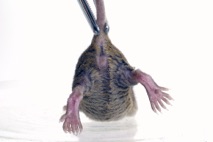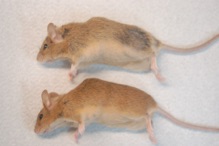We use mouse as model organism, and using genetic approaches to study developmental defects.
Our current projects involved in three areas:
- Molecular Genetics of Human Retina Degeneration Diseases (MOST grant number 104-2311-B-320-001)
- Understanding the molecular function of Zbtb16 in stem cell self-maintenance. (NSC grant number: NSC 98-2311-B-492- 001-MY3).
- Cloning and characterization of recessive embryonic lethal genes.
- Positional cloning and mutational analysis of spontaneous mutations.
Molecular Genetics of Human Retinal Degeneration and Usher syndrome
Retinitis Pigmentosa (RP) is an inherited, degenerative eye diseases that cause sever vision impairment due to the degeneration of the photoreceptor in the retina. Usher syndrome (USH) is a rare genetic disorder caused by mutations in any one of the 13 genes resulting in a combination of hearing loss and visual impairment (RP).
We collaborate with ophthalmologist (eye Doctors) at Tzu Chi General Hospital to collect families with different type of retinal degeneration diseases. We use Next Generation Sequencing technology and genetic Linkage analysis to mapped the diseases causing gene for each family. After the mutation is identified, we perform functional studies to understand the molecular mechanism of the diseases.
We are on the process of (1) developing genetic diagnostic panel for RP and USH, and (2) better understanding the genetic and molecular basis of the diseases.
Our ultimate goal is to develop treatments for RP and USH patients



Developmental defects in the mouse

Animals (in our lab we use mouse) with interesting disease phenotype (or trait) need to be test to test of its inheritance
If the phenotype is heritable, we also need to work out the inheritance pattern (i.e. autosomal, or sex-linked; dominant, or recessive). These animals are having spontaneous mutation.

The location of mutation can be found by using genetic approach to map the disease interval.
Using genome Browsers to prioritize candidate genes located within the disease interval; and use these information to design experiments to test which gene is the disease-causing gene.

The disease-causing mutation can be identified by systematically sequence candidate genes in the interval.

We can further study the gene expression pattern, the biological function of this molecule, and it’s interacting molecules to better understand the molecular basis of the disease.
Disease Mouse Models






